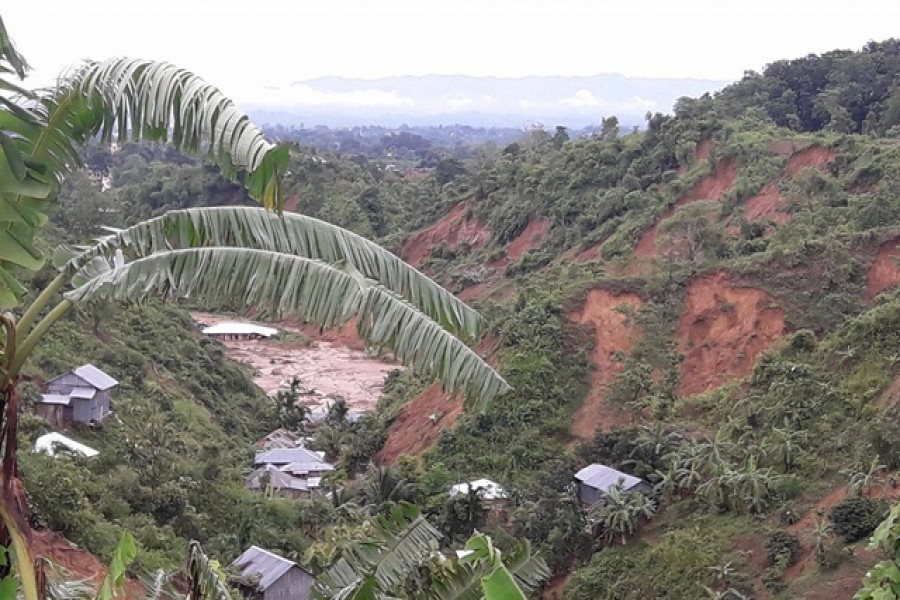Monsoon landslides in the greater Chattogram and Chittagong Hill Tracts (CHT) have already added to the region's proneness to natural calamities. They belong to a different category. The country has for centuries been vulnerable to two main natural disasters: floods and cyclones. With the increasing incidence of landslides in the south-eastern parts, the country's disaster scenario has an added disturbing dimension. The calamity of landslides has been occurring in the country with rising ferocity over more than a decade. Many other countries have been meeting a similar fate. The difference is they have worked out effective mechanism to cope with such largely manmade calamity.
The nearly recurring calamity of landslides has emerged in the country with a unique feature --- courting danger with a fool's arrogance. With reckless abandon people resort to hill cutting and tree felling to sneak into a narrow space for cliff hanging habitation. Following the first killer landslide in the Chittagong port city in 2007, the affected people were adequately warned against living in shanties built on the slopes of hills. Continuously being cleared of tree covers, the hills had already been rendered vulnerable to impacts of prolonged downpour. Few cared to pay heed to the stern warnings. After evacuation by different authorities, the slum dwellers kept returning to the hazardous slopes. In the next monsoon, they invariably met with tragic deaths, property losses and injuries. These happened as part of a cycle.
The port city's landslides are allegedly linked to a strong syndicate. They are a vicious fraternity comprising corrupt but influential elements in local communities and administrative tiers unabashedly trading on human misery. It's them who set up improvised shanties on the hills, and herd the homeless into those shelters for nominal rents. It's implied that these groups are formidably powerful, or else how could they muster the temerity to remain engaged in this sinister practice, one that involves loss of lives and various types of trauma. Stringent steps taken by the district administration, the city corporation and other government agencies were at last able to cut down on landslides in the port city to some extent. But to the consternation of the rights groups, the unscrupulous elements are raring to strike the hills again with their characteristic ferocity. The situation, fraught with dangers as it is, calls for constant surveillance on the part city corporation, local administration and environmental authority.
Following the great landslide in the Rangamati district and other areas in the CHT in 2017, the last year also witnessed a few minor ones. Heavy monsoon downpour this year portends a series of mudslides in the district. The local administration has singled out 600 families living on 33 hills as being at high risk. In Cox's Bazar district, landslide scare caused by incessant rain has displaced several thousand Rohingyas from their camps. At the same time, crevices have been discovered on more than 12 hills near camps sheltering 12,000 Rohingya families. It is feared to make the refugee deadlock more complicated. Despite prompt administrative measures, people's blasé attitude towards landslide is letting the disaster continue in some form or the other. So, an awareness campaign needs to be launched effectively to sensitise people against living dangerously on hill slopes. Then monitoring and follow-up compliance should be ensured.


